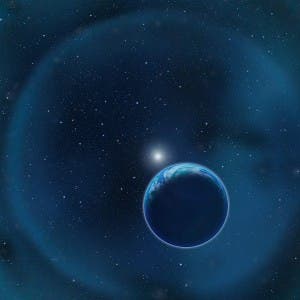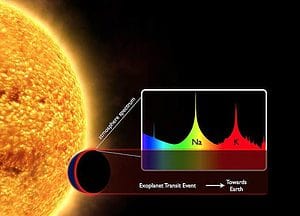Though hundreds of potentially life harboring exoplanets have been discovered thus far, until the James Webb Space Telescope becomes operational, sometime around 2018, scientists today lack the resources to peer into the guts of these planet and determine a realistic chance of hosting life. Even when the JWT goes live, however, it will take hundreds of hours of observations to come up with solid data for planets orbiting stars similar to the Sun.

Scientists at the Harvard-Smithsonian Center for Astrophysics have found that, given out current technological limitations, we should concentrate our efforts of finding life harboring planets to those orbiting white dwarf stars. At the end of its evolution, if it isn’t massive enough, a dying star will turn into a white dwarf – a very dense star no longer capable of sustaining nuclear fusion.
Nuclear fusion is what powers most star, including our Sun, allowing energy to spread through sunlight. However, even without fusion a white dwarf can still emanate a considerable amount of residual thermal energy, enough to keep it warm for billions of years until it slowly fades away. Some white dwarfs actually have been found to continue to spread heat even though they’ve been dated from the dawn of the Universe.
What makes the James Web Telescope so important for alien life research is its cutting edge instruments, capable of inspecting the spectral fingerprint of the planet’s atmosphere. With today’s tech, astronomers can establish the orbit, size or mass of a planet based on its transient motion around its parent star. With the James Web Telescope, scientists will also be able to determine key chemical composition elements found in the atmosphere’s of alien worlds.

This can be achieved using a technique astronomers call transmission spectroscopy. Chemical elements in a planet’s atmosphere absorb some of the starlight, meaning more light than normal will be blocked at that particular wavelength associated with the element, thus offering a spectrum of the planet.
“Detecting any of these biomarkers in the atmosphere of an Earth-copy planet around a nearby normal star, using JWST, will be extremely challenging, if not impossible,” said Dan Maoz from Tel-Aviv University in Israel. “The difficulty lies in the extreme faintness of the signal, which is hidden in the glare of the ‘parent’ star. The novelty of our idea is that, if the parent star is a white dwarf, that glare is greatly reduced, and one can now realistically contemplate seeing the O2 biomarker. Detecting other biomarkers will require future space telescopes that are even more ambitious than JWST.”
Looking for life around dying stars
The technique seems wonderful, in theory, however in practice it’s a whole lot more difficult to apply. Most parent stars are very bright, causing noise that blocks planetary signals. A white dwarf, though very dim and difficult to detect, offers less resistance to spectroscopy surveys, thus offering the best chance at detecting a possibly life harboring planet. For planets around other types of stars, such as red dwarfs, observation might take hundreds of hours, compared to mere hours in the case of white dwarf stars.
“In the quest for extraterrestrial biological signatures, the first stars we study should be white dwarfs,” said theorist Avi Loeb in a CfA press release.
What are the signals astronomers are looking for? Well, the most important biomarkers are oxygen and methane, since these chemical elements are typically generated by life, on Earth at least, and would quickly degrade were it not for their constant regeneration.
No planets have yet been detected orbiting a white dwarf, due to the difficulty in observing these faint stars, however there is some evidence to suggest that such planets might exist. In the paper published in the journal MNRAS, the researchers believe that in a survey of 500 dwarf stars – if a third of all white dwarfs host an Earth-mass planet within their habitable zones (where liquid water is supported) – one such planet might be found.


